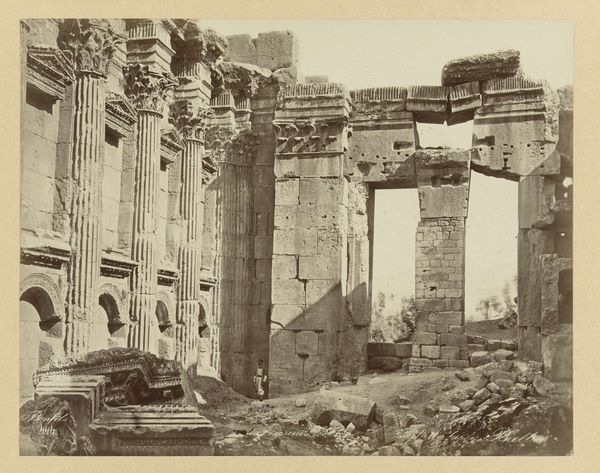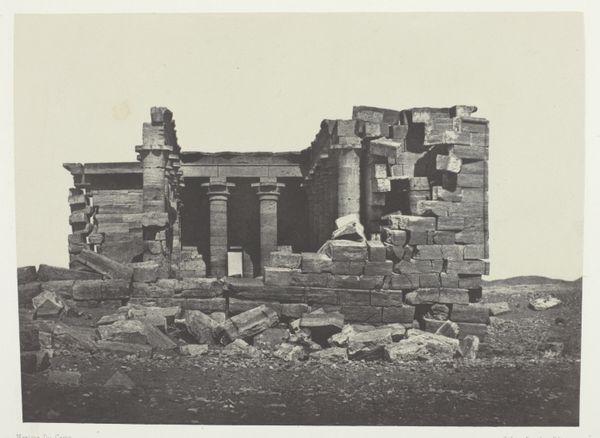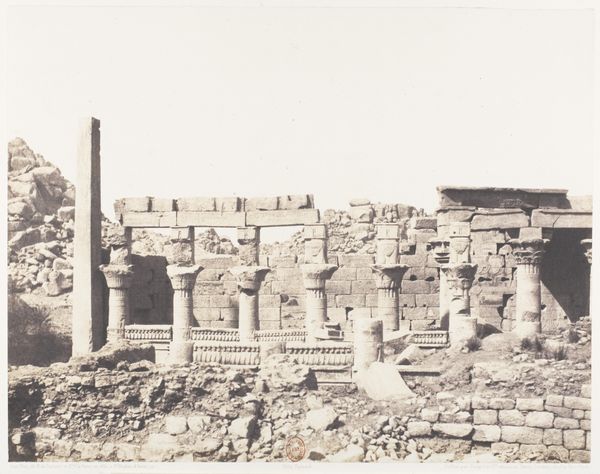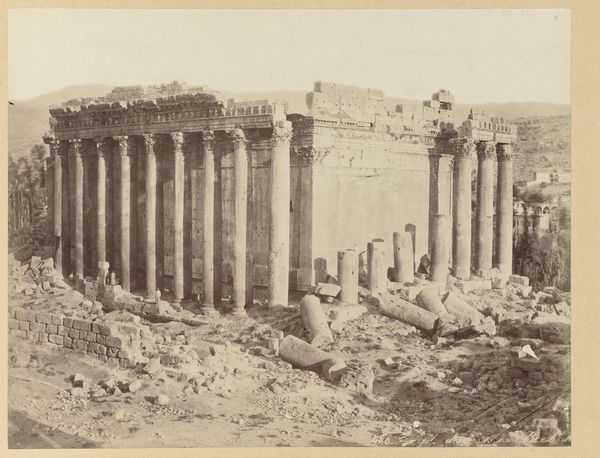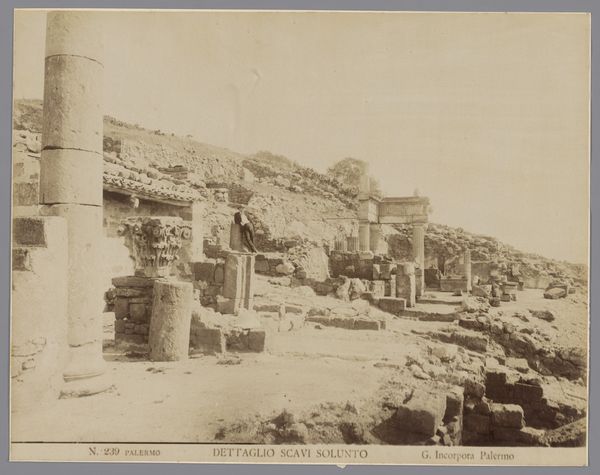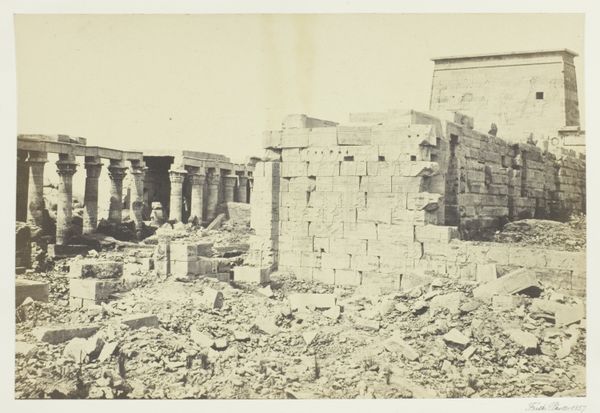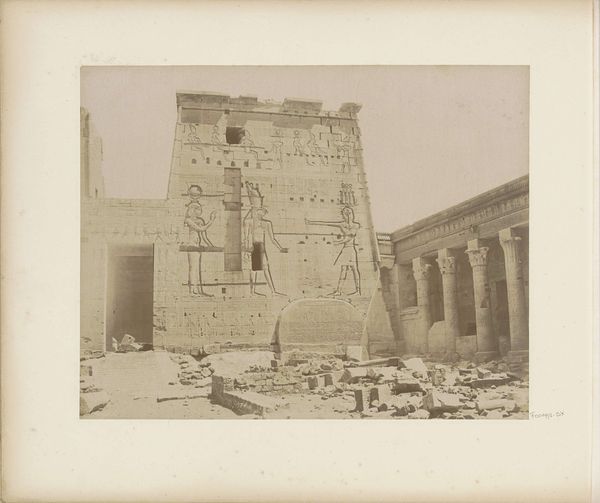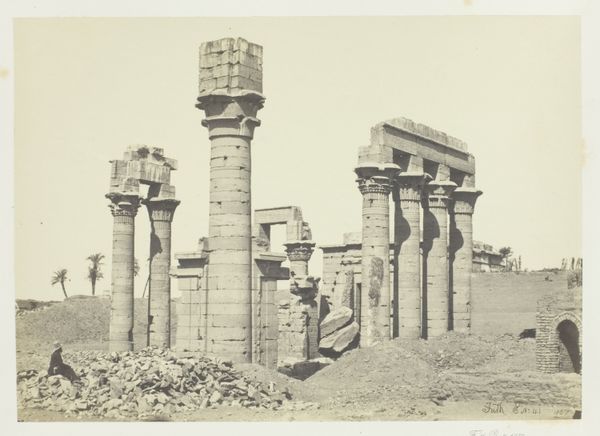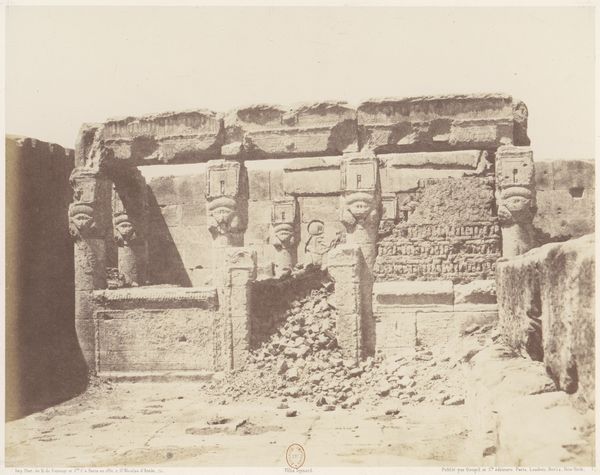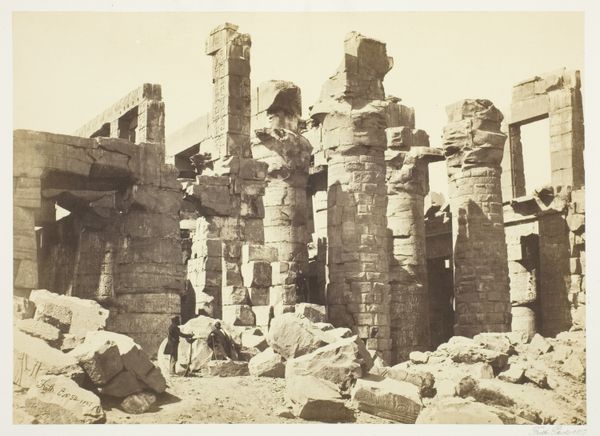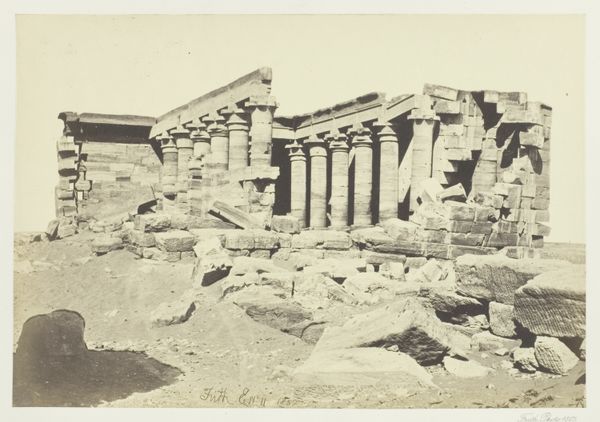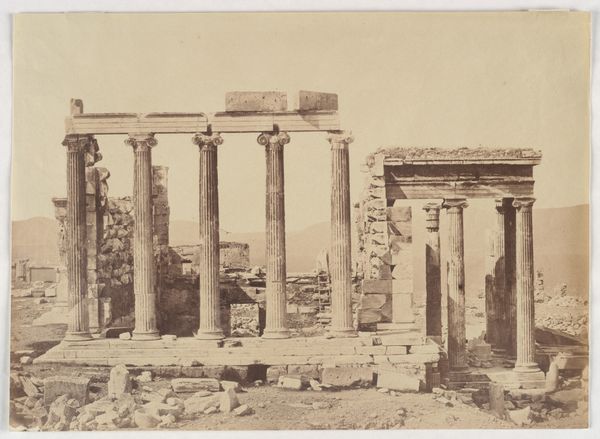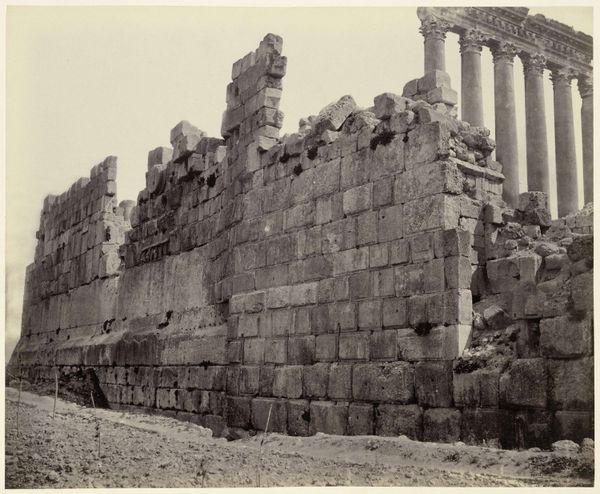
print, photography
# print
#
landscape
#
photography
#
ancient-mediterranean
#
cityscape
Dimensions: height 218 mm, width 278 mm, height 469 mm, width 558 mm
Copyright: Rijks Museum: Open Domain
Félix Bonfils made this albumen print of the Ruin of the Temple of Bacchus in Baalbek, likely in the 1860s or 70s, using a process that was as much chemistry as it was craft. The albumen print, popular in the mid-19th century, involved coating paper with egg white to create a smooth surface for capturing the photographic image. This labor-intensive process highlights photography's early ties to both scientific precision and artisanal skill. Bonfils, operating a commercial studio in Beirut, catered to the burgeoning market for images of the Middle East, turning ancient ruins into commodities for European consumption. The print’s sepia tones and sharp details evoke a sense of romantic decay, but also speak to the industrialization of image-making. By combining artistic vision with entrepreneurial drive, Bonfils exemplifies the complex relationship between art, commerce, and cultural exchange in the 19th century. This challenges us to consider how photography, even in its early days, blurred the lines between documentation, artistic expression, and the marketplace.
Comments
No comments
Be the first to comment and join the conversation on the ultimate creative platform.
